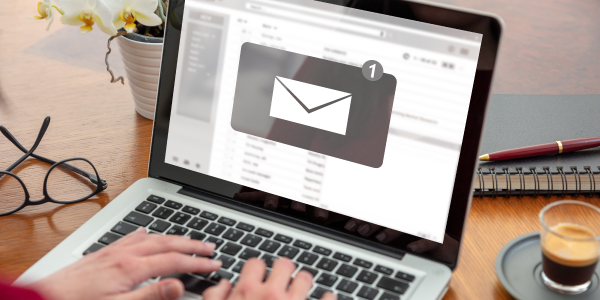Author: Celeste Appleton
Never take email security for granted. Healthcare organizations use emails daily in the workplace. With so much information going around your email hub, it would be a shame to have people outside your professional and social circle get into your protected information. Unfortunately, that may be the case. If a scammer somehow gets in your head and convinces you to click that forbidden link, it could, more or less, open a gap in your network–a gap big enough for them to invade. Think Anew ensures you another layer of encryption to secure your emails further. Still, greed is the fatal weapon of hackers and nosy competitors.
However, basic email security practices can go a long way in protecting your information from thousands of threats.
Use a strong email password.
Many people use “123456” as their email password. Either that or they go full-send with “123456789”. Robbers don’t spend their time smashing in your door. They spend most of their efforts picking the lock. Your password serves the same purpose. The easier your password is, the more likely they will breach your account.
Think Anew requires strong passwords for your work email account.
Use multi-factor authentication
Multi-factor authentication is another shield to your account–a second lock on the door. Think Anew has multi-factor authentication in place for your organization.
What does this mean? Suppose a hacker manages to guess your “123456” password. In that case, they’d be stopped by your multi-factor authentication–meaning there’s still a code they must enter before they get a sneak peek of your emails. Usually, these codes are sent to you by SMS, email, voice calls, or time-based one-time password (TOTP) apps.
Look out for “Phishing Emails”
Inspired by great outdoor activity, “phishing emails” is one of the many ways hackers steal your account information. Like in fishing, you are baited by emails requiring you to “log in” to your account. But, realistically, you’re putting your email, password, and potentially other sensitive information into their systems.
The most common phishing emails claim that they’re from the service providers you use—such as your bank, Amazon or PayPal. Suppose you don’t pay attention to the email address, tone of voice, and even the email’s grammar. In that case, you’re bound to lose business email security. Another type to look out for is from c-level users of your organization. Hackers will pose as these c-level people, attempting to retrieve financial information or gift cards. Don’t fall victim to these scams.
Don’t open attachments from unknown sources.
We cannot stress this topic enough. If you are not expecting an email from the sender with the attachment, send the email to your trash bin and empty the trash bin. If you know the sender, sometimes sending a separate email or calling them to verify that they sent the attachment can clarify.
Never access emails from public WiFi.
Accessing emails from public WiFi is like yelling your Facebook password at a mall. As you may be aware by now, public WiFis are never safe. You might as well have invited the hacker straight into your network.
These cybercriminals only need basic software to know what information is passing through that network. To avoid this from happening, encourage your peers and fellow employees to use mobile internet or secured private WiFi connections whenever they’re outside the office. Mobile internet may not be as fast, but it’s safer than public WiFi services.
Change your password as often as possible.
You might be used to not changing passwords because it’s inconvenient to remember the changes. Still, the professional side of the world isn’t forgiving at all. One of the most simple email security practices is regularly changing your passwords.
Password leaks and data breaches happen yearly. However, cybercriminals tend to sit it out for a while before attacking again. So treat your password as your first line of defense, and change it every six months to further refine your shield.
Log out of your email account when you’re finished.
When you finish your tasks using your account, log out of your account, especially if using a shared device. Forgetting to log out of a shared or unfamiliar device is like giving the keys to your car away.
